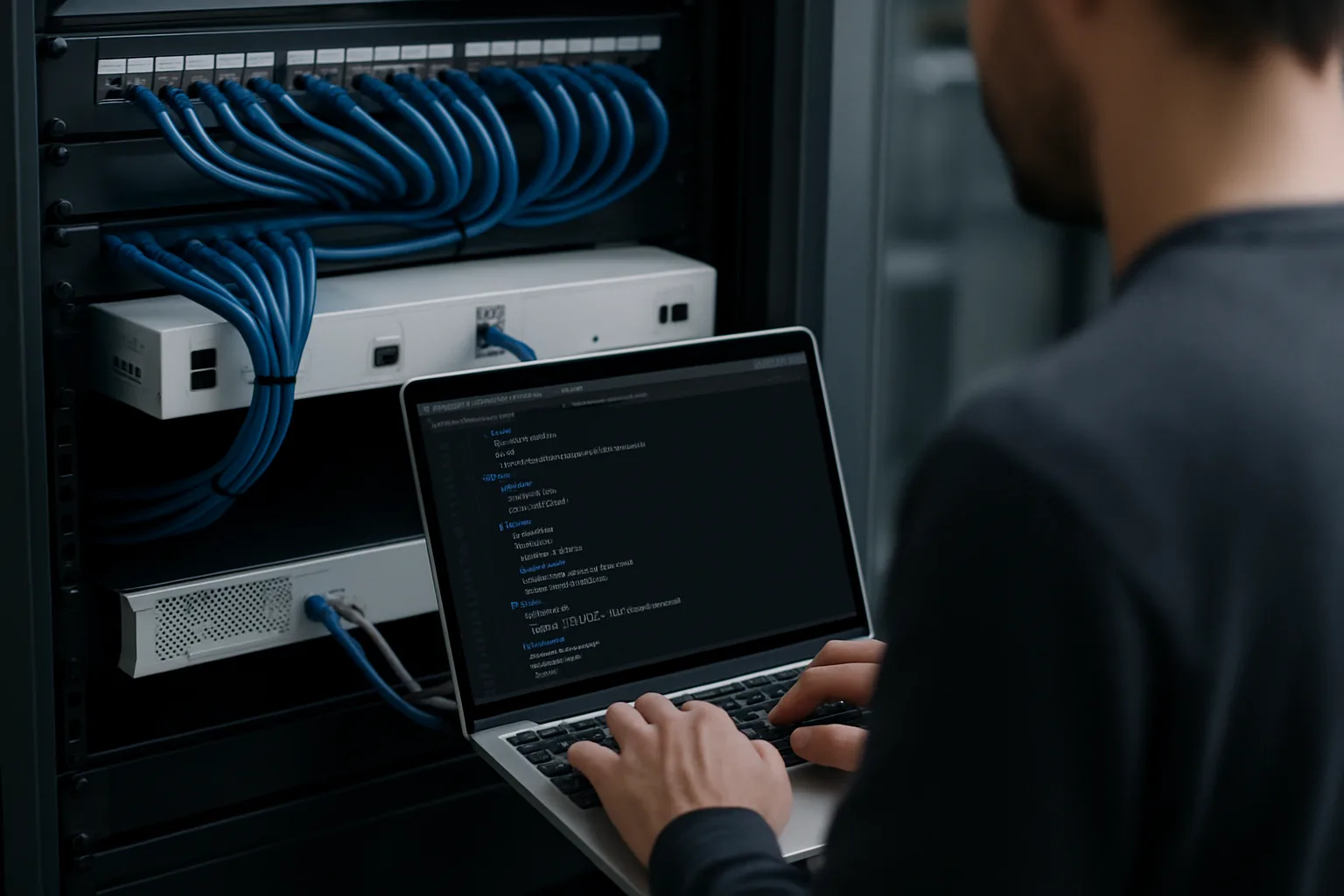I’ve configured a fair few small office firewalls. The XGS88 sits in that sweet spot: compact, capable and fiddly if you skip the prep. This guide focuses on practical choices, not marketing copy. Expect concrete steps for VPN configuration, user management, firewall rules and sensible network sizing for an office network setup.
Setting up VPN on Sophos XGS88 for office use
Initial setup of Sophos XGS88
- Rack it, plug the console, and make one admin account with a strong password. I start on the appliance itself and complete the initial setup via the web console on its default management IP. Change the default ports if you want mild obscurity, but don’t invent exotic port mappings that break client VPNs.
- Apply the latest firmware before any policy changes. Firmware fixes are often about VPN stack stability and authentication bugs. Do the update during a maintenance window.
- Plan address spaces. Put the LAN on a dedicated subnet and reserve a separate pool for VPN clients. Avoid overlapping subnets with common home networks — that is a common cause of failed routes.
Configuring VPN settings
- Decide protocol first. For site-to-site, I use IPsec with strong ciphers (AES-256, SHA-256) and modern DH groups. For remote access, I prefer SSL/TLS VPN (Sophos Connect) for client ease-of-use, or IKEv2 for native mobile clients.
- Authentication: use RADIUS or LDAP if you already have Active Directory. That gives you single sign-on and makes user management easier. If you do LDAP, bind it as a read-only account and scope queries to the correct OU.
- Split tunnelling: consider it. For small offices with cloud-hosted services, split tunnel reduces bandwidth on the office uplink. For sensitive setups, route everything through the VPN and accept the extra bandwidth hit.
- DNS: push internal DNS to VPN clients. That avoids users typing IPs for printers and file servers.
Testing the VPN connection
- Test from a clean client and from a device on a typical home network. Test both authentication and resource access.
- Verify routes. On the client, check that the VPN has added the right routes and that you can reach servers by IP and by hostname.
- Test failover where relevant. If you have dual WAN, simulate primary link failure and confirm IPsec tunnels re-establish on the secondary.
- Log checks: use the XGS logs to confirm negotiation phases and to spot dropped packets. Enable debug only when needed.
Troubleshooting common issues
- Overlapping subnets: if a user can authenticate but cannot reach resources, check for overlapping subnets first.
- MTU problems: dropouts when transferring large files often signal MTU or MSS clamping issues. Lower the MTU on the VPN interface or enable MSS clamping on the firewall rule for VPN traffic.
- Authentication mismatches: clock drift kills certificate-based auth. Check clocks and renewal dates.
- VPN client hangs after firmware updates: clear cached sessions, remove and re-create the profile, and re-issue client configuration.
Best practices for VPN security
- Use certificate-based authentication for site-to-site tunnels. It is less brittle than shared secrets.
- Enforce strong ciphers and disable obsolete algorithms. Keep IKE and IPsec profiles up to date.
- Limit access by group membership. Create policy rules that only allow VPN groups access to required subnets and ports.
- Rotate shared secrets and revoke certificates on employee exit. Have an offboarding checklist that includes VPN credentials.
- Log VPN sessions and retain logs long enough to investigate incidents. Set alerts for multiple failed logins.
User Management and Firewall Rules
Managing user access levels
- Integrate the XGS88 with your directory. I use LDAP tied to AD groups so access maps to roles rather than people. Create groups like “Office-Admins”, “Staff-Default” and “Contractor-Limited”.
- Apply least privilege. Give desktop staff the ports they need for email, web, and file servers. Keep admin rights tightly controlled and limited to explicit IP ranges where practical.
- Use two-factor authentication for admin and remote access accounts. A password alone is weak.
Creating firewall rules for VPN traffic
- Keep rules explicit and minimal. Start with deny all and add allow rules for necessary flows. For VPN traffic, allow only the specific subnets and ports the tunnel needs.
- Order matters. Place VPN-specific rules above generic LAN allow rules to avoid accidental broad access.
- Use source and destination groups. It makes rules readable and simpler to audit.
- Tag and comment rules. Years from now you will thank yourself.
Monitoring user activity
- Enable connection logging for critical rules. Check auth logs and VPN session lists regularly.
- Use QoS and bandwidth monitoring to spot heavy users. For office network setup, I place chatty services like OneDrive or backup systems on explicit scheduled windows if they swamp the uplink.
- Create simple alerts: repeated failed logins, large outbound transfers, or a device connecting from an unexpected geo-location.
Adjusting firewall settings for performance
- Watch CPU and throughput on real traffic. Application control and deep packet inspection are useful but expensive. Turn off DPI on rules that do not need it.
- For offices with many simultaneous SSL VPN clients, tune concurrent session limits. If the office uses lots of cloud services, prioritise interactive traffic (RDP, VoIP) with QoS.
- Consider hardware offload features if you need higher throughput. On a small office, conservative application control with sensible QoS often gives the best perceived performance.
Recommendations for office network setup
- Size the network by real needs, not marketing. Count interactive seats, expected cloud sync patterns and any heavy services like backups. Plan uplink capacity accordingly.
- Use multiple VLANs: one for staff, one for guest Wi-Fi, one for servers, one for printers. Keep management access off the guest VLAN.
- DNS and DHCP: centralise on a resilient server or a pair of servers. Push internal DNS via DHCP so VPN clients always use the right resolver.
- Keep a simple failover plan for WAN. Even consumer-grade secondaries provide resilience for remote access and cloud continuity.
Final takeaways on Sophos XGS88 configuration
I treat the XGS88 like a toolset: it gives granular control if you invest time in planning. For VPN configuration, pick the right protocol, plan address spaces, and integrate directory services early. For user management and firewall rules, be explicit, keep rules minimal and monitor actual usage. Network sizing matters; an undersized uplink makes every smart rule feel useless. Configure thoughtfully, test deliberately, and automate routine checks so the firewall protects without being a constant project.





